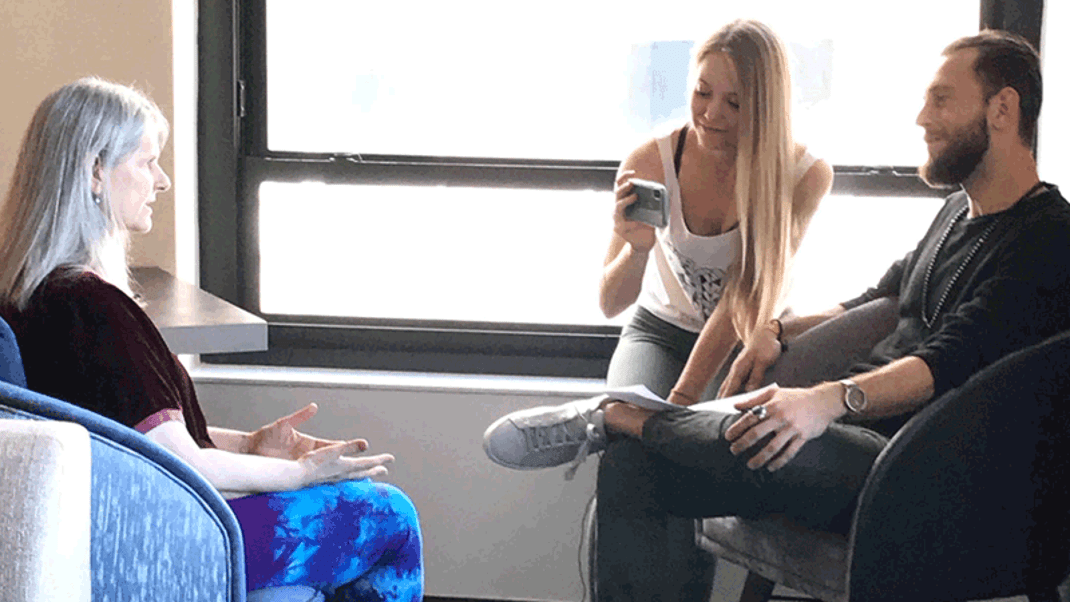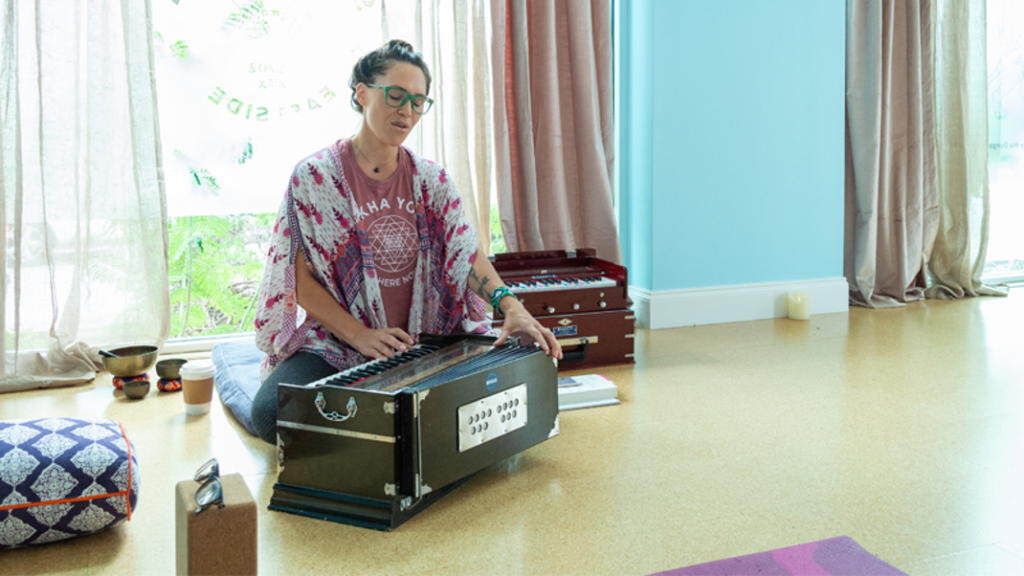Cyndi Lee has been doing vinyasa for over two decades, but never in her wildest dreams did she think that one day she would share a yoga class with the Dalai Lama. She had no idea what to expect when he walked on stage and announced that they were going to do some of his favorite poses. But this wasn’t just any old class, it was a special lesson on how Buddhism can help illuminate your practice.
Practicing for the first time with Cyndi Lee at Yoga Journal LIVE in New York City, I was struck with a revelation that seemed to be calling out to guide the Live Be Yoga Tour as we inquire into the future of yoga over the next six months. It was evident yet elusive, and when the epiphany flashed, the enigma melted into dissolution quicker than sweat evaporates on Lycra. But before we can celebrate the fireworks, we must first understand how the fuse was lit.
Forty years earlier, long before hot yoga studios and chakra leggings were a thing, Lee was introduced to yoga to fulfill a physical education requirement during college in Southern California. She remembers learning kriyas and purifications in Joshua Tree as magical. Since in the 70s and 80s teacher training weren’t as abundant as they are now, to deepen her practice she became passionately self-taught, reading books by Sivananda and Richard Hittleman’s Yoga: 28 Day Exercise Plan.
When she talked her way into her first teaching job at a spa in New York City, it was her Master’s Degree in Dance and Choreography that proved her secret ingredient. “If you can choreograph a dance, you can figure out the arc of a class, and how to unpack poses for students. It was a different time. It was OK to offer yoga from my experience and my heart.” She laughs. “ I just liked it. It was fun” she says. “It wasn’t like I thought, this is my life.” Four decades later, Lee’s career has been one of the longest-running tenures in American yoga.
By 1998, still in the Big Apple, Lee opened OM Yoga Studio, which ran for nearly 15 years and shaped the city’s yoga culture. She is credited with being the first Western female yoga teacher to fully integrate yoga asana and Tibetan Buddhism, and she was introduced to Buddhism as she navigated the passing of a friend. “It spoke to me; it felt like coming home. I felt empowered. If I’m suffering and I recognize that, I can change it,” she says. One of her favorite fundamental Buddhist concepts is our inherent goodness. To Lee, it was a “no brainer” to tap into it through asana. “We practice letting go of all the thoughts to get to the basic goodness,” she says. This gave rise to three pillars on which her methodology and legacy have been built.
The first is vinyasa. Offering more than a palpable pleasure, flowing from one pose to another touch upon the linchpin of Buddhism: impermanence. “You come into Warrior 1 just in time to come into Warrior 2,” she says, so the student is constantly practicing non-attachment, which in Buddhism is the key—and I mean like Neo had the key to the Matrix—to free ourselves from suffering.
The second pillar is alignment. Beyond the arrangement of flesh and bones, Lee extends the concept into the mind and encourages students to be aware of how they align their attitudes. “Are you coming to class to relax but aggressive in your practice?” In the Buddhist view, it’s not about labeling either one as good or bad, right or wrong, but rather alignment is about maintaining the right relationship to intentions.
To do this, she turns to the third pillar, compassion, and mindfulness, which are cornerstones of Buddhism. Compassion instills “a fundamental friendliness toward ourselves and is the blossoming of ahimsa (non-violence),” she says. Mindfulness is to consciously place the mind, which coincides with the meaning of vinyasa perfectly. Despite being popularly understood as a Chaturanga party, vinyasa really means to place in a special way.
Cyndi teaches this brilliant methodology seamlessly. “From Anjali Mudra [Salutation Seal], place your right hand on your knee… and notice the moment it touches. Place your left hand on your knee… and notice the moment it touches. Step your feet back to Downward-Facing Dawwwg,” she says in an exaggerated New York accent, “and notice the moment they touch.”
That was it. The light bulb went off in a flash of brilliance that shattered the glass around it. To notice the moment. It was simple yet elusive, and Cyndi’s gift, as she described it, was to help us “bring the mind back, without saying bring the mind back, because that would be pedantic and boring.” As the expressions of yoga continue to evolve across the planet, the intersection of Buddhism and vinyasa teaches us that every fleeting moment offers a chance for spiritual practice; whether you’re meditating in a cave or rocking out in a flow class, every moment counts. Place your mind in a special way. This is Vinyasa. It’s not just getting on your mat or what you do there, but it is noticing as you do it that’s the practice.
Conclusion:
In the Buddhist view, it’s not about labeling either one as good or bad, right or wrong. Instead, alignment is about maintaining the right relationship to intentions. This intersection of Buddhism and vinyasa teaches us that every fleeting moment offers a chance for spiritual practice; whether you’re meditating in a cave or rocking out in a flow class, every moment counts.




